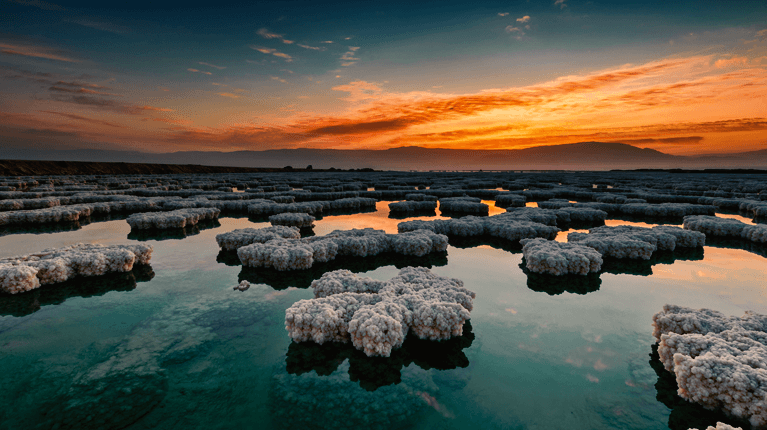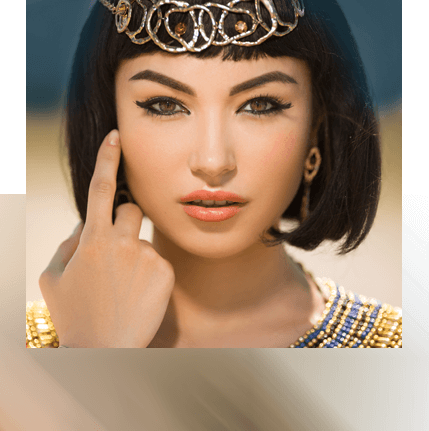50% off all face cleansers | Discount Applies In Cart
-
The lowest gallery in the world
Where did the giant paintings on abandoned buildings
in the Dead Sea appear from?.
Dede's bandages, scary cartoons and giant animals - street artists from Israel and abroad gathered at the shores of the Dead Sea to create the "Minus 430 Gallery" - stunning paintings that scream to save the disappearing sea.
Quietly, without attracting too much attention, 30 leading street artists from Israel and around the world gathered at Kayla Beach on the shores of the Dead Sea, adding colors between the blue water and the yellow desert. It is not secret that the Dead sea is disappears and the beaches are dying. This is how the "Minus 430 Gallery" project, or if you’d like, the world's lowest gallery, was created, aiming to raise awareness regarding the sad situation. The artists volunteered to paint abandoned structures scattered throughout the beach, and the result is a celebration of colors.
-
The
abandoned
structures

Restore
The
Old
GloryThe abandoned structures were used as a Jordanian camp until 1967, and later became the Nahal post, but they have been empty for more than 40 years: "My parents who founded Kibbutz Kayla lived in these buildings," says Itai Maor, together with the PPL Studio located in the area of the Megillot Regional Council, "one of the buildings was used as a clinic and then as a dining room. The idea of the project is to restore the old glory - paint the structure and bring something colorful to the area; all under the theme of coexistence between Israelis and Palestinians living in Jericho, and of course, in order to raise awareness of the disappearance of the Dead Sea. We did not think there would be such a response from the artists, but it turns out that they were really happy to take part and only waited for the opportunity.".
The Mexican artist Libre painted the faces of two people he met while on the kibbutz and at the Kayla Beach: Leary - an Israeli baby from Kayla, and Bashir - a Palestinian guy from Jericho who works at the beach. A combination of the two faces shows the unique coexistence of the northern Dead Sea area, which touched the artist's heart during the visit.
-
Work
Based On Humor
Guy, known as Dioz and Micha, aka Puka, collaborated on this piece. "We wanted to create work based 0n humor and cartoon characters," explains Guy. "The idea was that the wall would look funny because of the caricature style, but when you look at every scene, the story becomes tragic and frightening, to be indirect but very direct criticism of the state of the Dead Sea, who is responsible for it, and how to solve the problem. And throwing money into the air with dollar marks in his eyes, a tourist in a bathing suit and a cocktail in his hand with a hole in the stomach passes through a pipe, and other ways to criticize the people responsible for the Dead Sea situation. We also selected basic warning colors - red, black and yellow, so that the work would serve as a warning sign.”.
"The letters were cut and shaped on the wall conferring to the abandoned structure, the idea of the disappearance of the Dead Sea and the drying levels seen in the ground as the years pass," says Mintz. "The text also speaks of steps that descend or rise from the wound, and the wound itself can be interpreted as the reader sees fit - whether as a personal wound or that of the Dead Sea, which is a wound in the body of the state, that keeps on deepening and widening. The red color was chosen to symbolize urgency and awareness, combining that with the white text promotes an association with first aid, intensive care..
"The work presents an ancient fertility goddess, covered with sores that break her body," explains Wegman. "The goddess, in her pose, presents her body as a gift to the world, but despite her desire to give, her body crumbles and fades as much as they take from her."

-
Painting
The Artist Project
Painting More Than A Decade
In
The Public
SpaceDede has been painting the bandages for more than a decade in the public space throughout the country and the world, following his military service during which he experienced things that left him with PTSD. The bandages are the solution he found to take care of himself. As part of the project, he chose to paint the bandages on an abandoned military shelter, thus restoring the image to the place it originated from.
The story at the base of the wooden animals is the search for refuge, escape to another place to find security. In the case of the animals in the Dead Sea project, they are local Israeli animals from the desert - ibexes, who are fighting for territory and their existence as a result of the disasters that humans cause in the area. The battle between the two ibexes on the territory is an image of a battle between people over the resources of the Dead Sea, a battle that causes the destruction of the place.
"The idea behind the work is the second before you lose hope," says Unile. " The flying cats in space have been with me for a while in constant search for inspiration, and they are always there for me when I think there's nowhere else to go. I've tried to use them in the context of the Dead Sea, which has been in a state of limbo “towards the end”. I do not know what the next stage will be, but I really hope that the cats will save the day. ".

 French
French German
German Italian
Italian Russian
Russian Spanish
Spanish